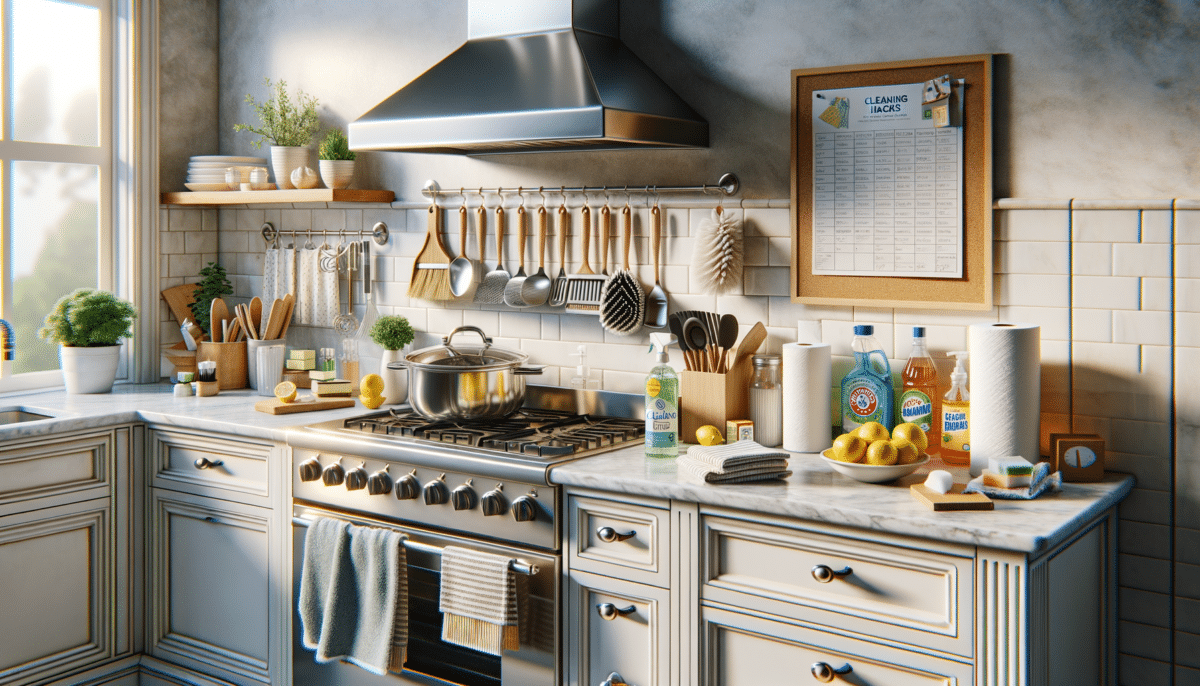Understanding the Importance of Kitchen Cleanliness
The kitchen is often the heart of the home, where meals are prepared and families gather. However, it can also become a breeding ground for germs and bacteria if not properly maintained. Ensuring a clean kitchen is crucial not only for aesthetics but also for health reasons. A spotless kitchen helps in preventing foodborne illnesses, which can arise from contaminated surfaces and utensils. According to the Centers for Disease Control and Prevention (CDC), foodborne diseases affect millions annually, highlighting the importance of maintaining hygiene in food preparation areas.
Moreover, a clean kitchen can enhance your cooking experience. Imagine trying to prepare a meal in a cluttered, dirty space; it can be both stressful and inefficient. A well-organized kitchen allows for a more enjoyable cooking process, enabling you to focus on creativity and taste rather than mess and disorder. Additionally, regular cleaning can prolong the life of your appliances and surfaces, saving you money in the long run. By understanding these benefits, one can appreciate the value of a clean kitchen beyond just its visual appeal.
Essential Tools for Kitchen Cleaning
To maintain a pristine kitchen, having the right tools is essential. A few basic items can make a significant difference in your cleaning routine. Consider investing in the following:
- Microfiber Cloths: These are excellent for wiping down surfaces without leaving streaks or lint.
- All-Purpose Cleaner: A versatile cleaner can tackle countertops, appliances, and more.
- Scrub Brushes: Useful for tackling stubborn grime on pots, pans, and tiles.
- Baking Soda and Vinegar: These natural cleaners can be used for a variety of tasks, from deodorizing to stain removal.
- Dish Soap: Essential for cleaning dishes and cutting through grease on surfaces.
By equipping your kitchen with these tools, you can efficiently address various cleaning tasks. Each tool serves a specific purpose, allowing you to tackle dirt and grime effectively. For instance, microfiber cloths are known for their ability to capture dust and bacteria, making them ideal for wiping down surfaces. Meanwhile, natural cleaners like baking soda and vinegar are not only eco-friendly but also highly effective in removing stains and odors.
Daily Kitchen Cleaning Routine
Establishing a daily cleaning routine can significantly reduce the buildup of dirt and grime in your kitchen. Here are some steps to incorporate into your daily regimen:
- Wipe Down Surfaces: After each meal, take a few minutes to wipe down countertops, tables, and stovetops. This prevents spills from hardening and becoming difficult to clean.
- Wash Dishes Promptly: Avoid letting dishes pile up in the sink. Wash them immediately or place them in the dishwasher to maintain a tidy space.
- Sweep the Floor: A quick sweep can prevent crumbs and debris from accumulating, keeping pests at bay.
- Empty the Trash: Regularly emptying your trash can prevent odors and reduce the risk of attracting pests.
By following these simple steps, you can maintain a clean and organized kitchen with minimal effort. Consistency is key; even a few minutes of daily cleaning can prevent larger, more daunting tasks from piling up. This routine not only keeps your kitchen looking fresh but also ensures a hygienic environment for meal preparation.
Deep Cleaning Strategies
While daily cleaning is essential, deep cleaning your kitchen periodically is crucial for maintaining a truly hygienic space. Deep cleaning involves tackling areas that are often overlooked during regular cleaning sessions. Here are some strategies to consider:
- Clean Appliances: Regularly clean your refrigerator, oven, and microwave to prevent the buildup of food debris and odors. Use a solution of water and vinegar to wipe down the interiors.
- Scrub Grout and Tiles: Use a scrub brush and a mixture of baking soda and water to clean grout lines and tiles, which can harbor dirt and bacteria.
- Sanitize Sink and Drain: Pour a mixture of vinegar and baking soda down the drain, followed by hot water, to eliminate odors and bacteria.
- Organize Cabinets: Remove items from cabinets and wipe down the shelves. This is an excellent opportunity to declutter and reorganize.
Deep cleaning may require more time and effort, but the results are well worth it. By addressing these often-neglected areas, you can ensure a comprehensive clean that leaves your kitchen sparkling. Regular deep cleaning also helps in identifying potential issues, such as leaks or mold, before they become significant problems.
Eco-Friendly Cleaning Tips
Incorporating eco-friendly cleaning practices into your routine is not only beneficial for the environment but also for your health. Many conventional cleaning products contain harsh chemicals that can be harmful. Here are some eco-friendly alternatives:
- Use Natural Cleaners: Opt for natural ingredients like lemon juice, vinegar, and baking soda, which are effective and safe.
- Recycle and Reuse: Use reusable cloths instead of disposable wipes and consider repurposing old items for cleaning tasks.
- Conserve Water: Be mindful of water usage while cleaning. Use a bucket instead of running water when scrubbing floors or washing dishes.
- Choose Green Products: Look for cleaning products labeled as environmentally friendly or biodegradable.
Adopting these eco-friendly practices can significantly reduce your environmental footprint while maintaining a clean kitchen. Not only do these methods help in preserving natural resources, but they also contribute to a healthier living space free from toxic chemicals. By making small changes, you can create a positive impact on both your household and the planet.
